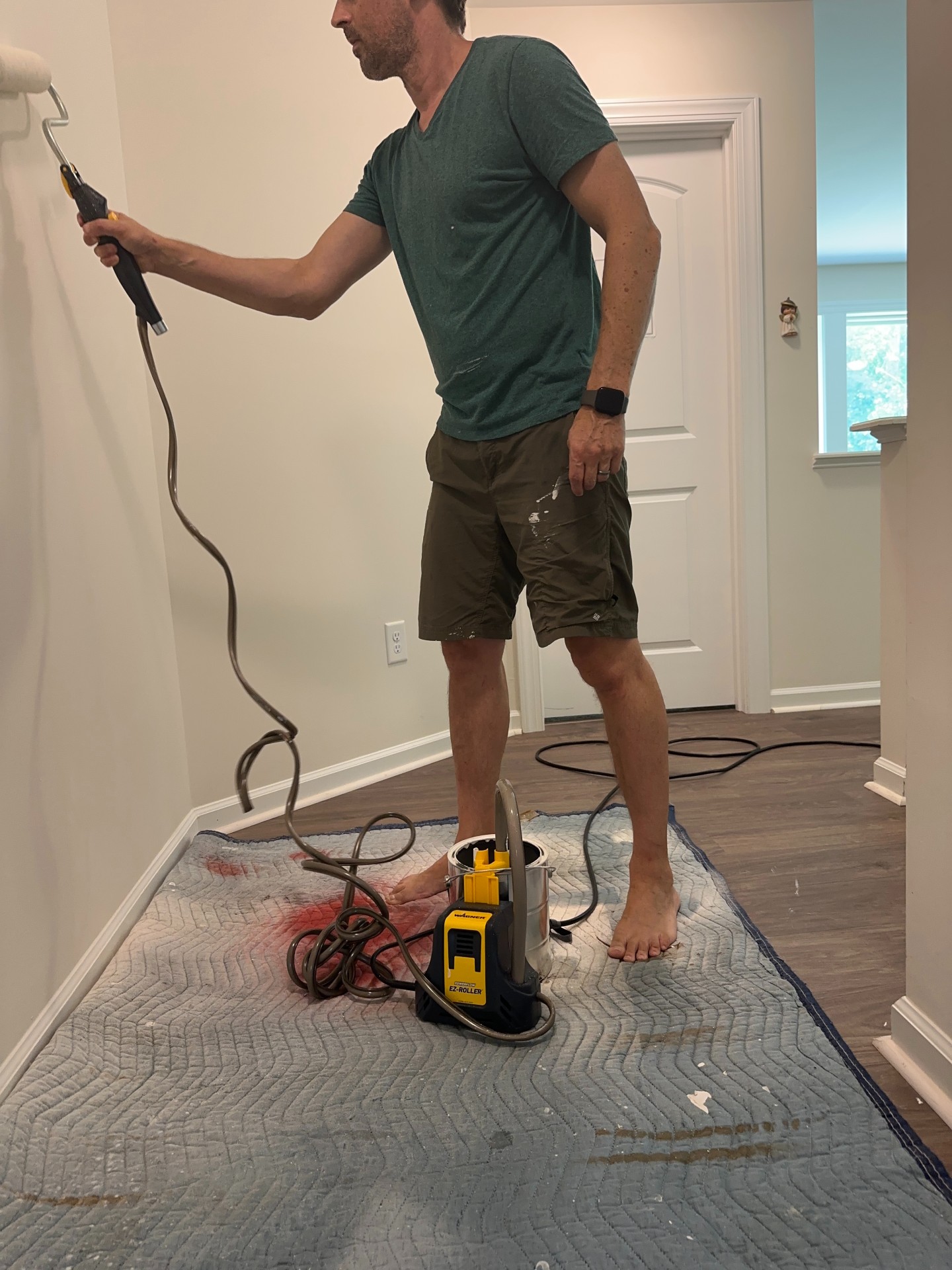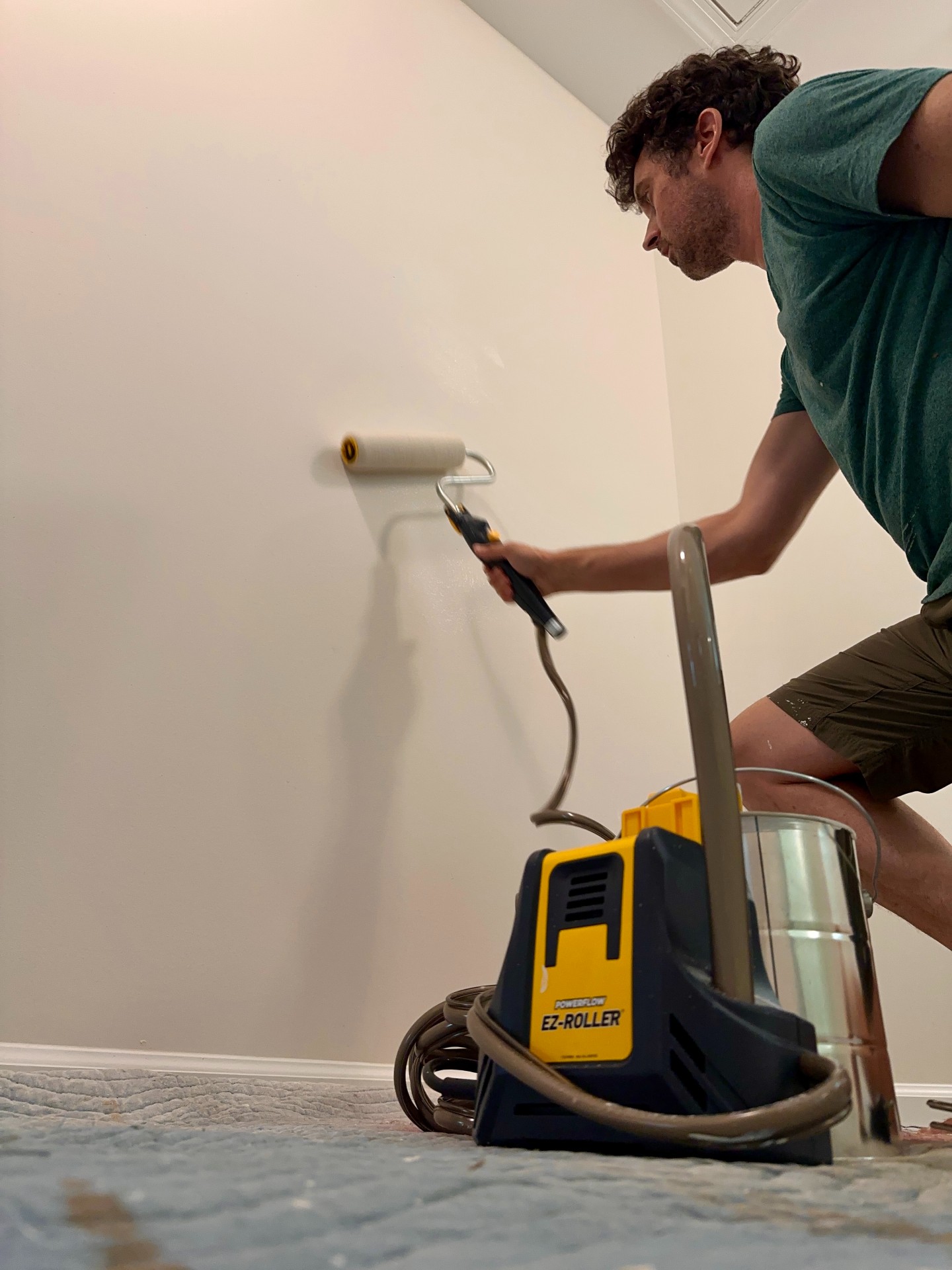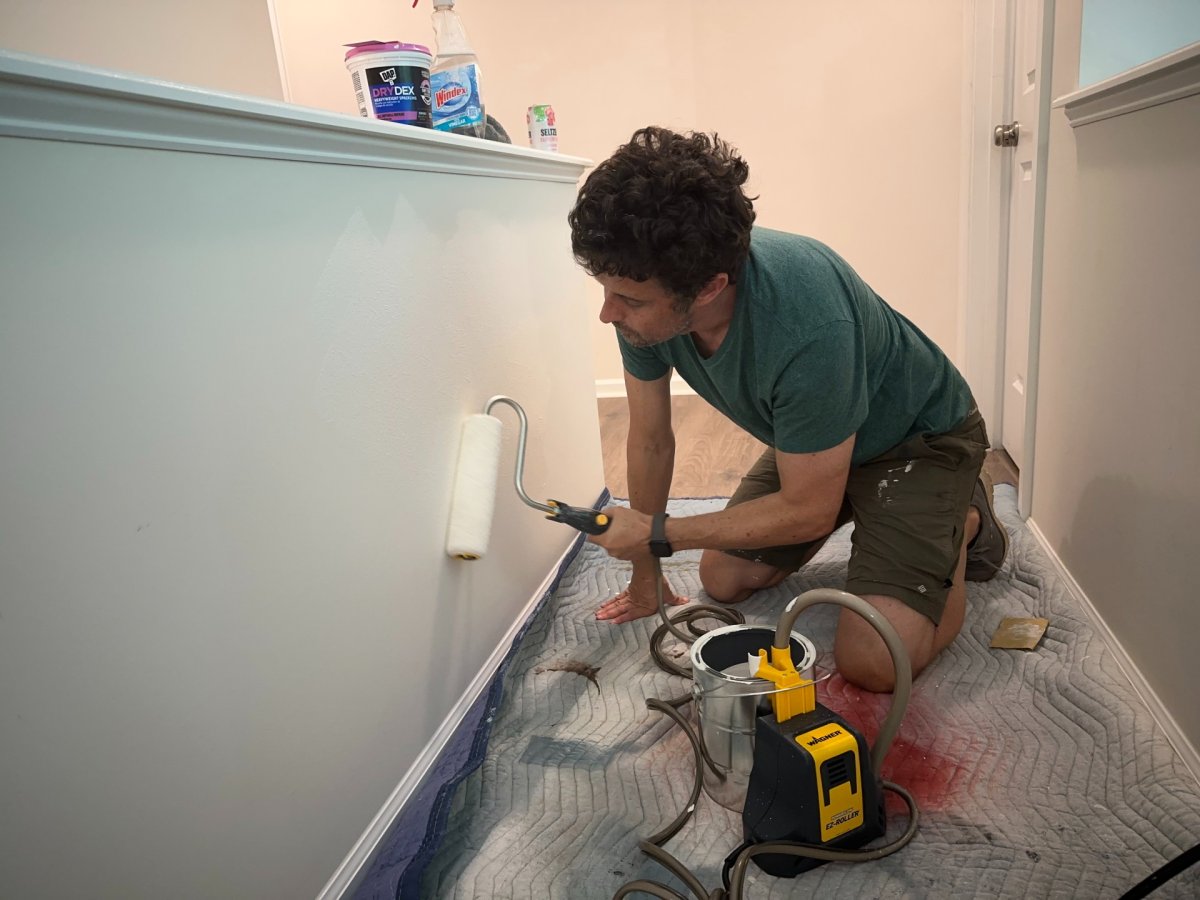If you’ve ever painted a room with a roller, then you know the drill: dip the roller into a paint tray, roll out the excess paint, apply it to the wall, then repeat these steps dozens of times until you’ve finished the job. The Wagner Smart Sidekick Roller aims to speed up the wall-painting process by eliminating the paint tray, replacing it with a small pump and hose that feeds paint directly from can to roller.
Having tried various purported time-savers for the task of painting, I wanted to find out whether the Sidekick would help me get the job done faster or complicate the task unnecessarily. So, I put the Wagner Sidekick to the test, using it to paint an upstairs hallway in my home that was looking tired from numerous scuffs and fingerprints. The Sidekick quickly won me over with its easy setup and smart design.
Wagner Smart Sidekick Roller: At a Glance
Our rating: 4.5/5
| Wagner Sidekick Specs | |
| Material | Polyester |
| Size | 9 inches |
| Compatible surfaces | Smooth or rough |
Testing the Wagner Smart Sidekick Roller


The Wagner Sidekick paint roller features a small pump that attaches to the side of a 1-gallon or 5-gallon paint bucket, accompanied by a 16-foot hose that connects to a roller. The pump, which is powered by a standard power cord, pushes paint from the can through the tube to the roller. As the paint is pumped into the roller, it’s forced through holes in the core of the roller and into the brush. A button on the handle controls the flow of paint to the roller. All this sounds good in theory, but what about in practice?
| What We Like | What We Don’t Like |
| Continuous flow of paint speeds up the process of painting a wall | Sidekick roller is noticeably heavier than a standard paint roller |
| Sidekick attaches to the paint can, so there’s no need to dump paint | Cleanup does take some time |
| Doesn’t leak and controlling flow of paint is fairly easy |
Surprisingly Simple Setup
Setting up the Wagner doesn’t really take any more time than setting up a traditional paint tray. One of the things I like best about the Sidekick is that it attaches to the existing paint can, so there’s no need to dump paint into a reservoir as you would with many paint sprayers (nor is there a need to clean out a reservoir when you’re all done). Attaching the pump to the side of the paint takes seconds. From there, simply place the pump’s tube in the paint, connect the roller to the other end of the tube, plug the Sidekick into an outlet, and start painting.
Short Learning Curve
Once I had the Sidekick set up, I set about painting my upstairs hallway. The controls are simple: press the button on the roller handle to start the pump and the flow of paint into the roller. When you first fire up the Sidekick, it takes about 30 seconds for paint to flow through the 16-foot tube and into the roller.
There is a bit of a learning curve with the Sidekick. I left the pump on too long on my first try, which overloaded the roller with paint, causing me to put too thick a coating on the wall. But after just a few minutes, I quickly got a good feel for how to regulate the pump to get that just-right amount of paint on the roller. From there, I was off to the races. Without having to constantly stop to reload the brush, I was able to make quick work of the vast wall space in my hallway. My only real gripe was with the brush, which is noticeably heavier than a standard one, especially when applying paint up high.
While the most obvious advantage of the Wagner Sidekick is speed, I did notice other benefits. Without having to continually move back and forth from a paint tray, there were fewer drips and hence less mess than with a standard roller. I also found that the paint went on thicker with the Sidekick than with a standard roller, allowing for better coverage and, as a result, fewer coats.
With its 16-foot hose, the Sidekick offers ample range. I was able to reach the top of higher walls and work my way a good distance down the wall before having to reposition the can. When I did have to move the can, doing so was easy since the pump is small, lightweight, and attached to the can or bucket.
Multi-Step Cleaning
As much as I enjoyed my first effort with the Sidekick, I dreaded the inevitable cleaning process that would follow. Specifically, I wondered how in the world I was going to clean paint out of a 16-foot tube.
It turned out that cleanup was easier than I thought. The process requires you to flush the hose with fresh water using a bucket, dismantle the roller, and rinse the roller parts. While cleaning the Sidekick requires more steps than cleaning a standard roller, it’s not complicated. All told, it took me about 15 minutes to clean the Sidekick. Yes, it takes longer than cleaning a standard brush, especially if you tend to throw away your roller brush at the end of the day, but I found it to be worth the effort—especially for an all-day painting effort.
Does the Wagner Smart Sidekick really save time?

There are many gizmos out there designed to make painting a quicker and easier process; some work and some are junk. I’d place the Wagner Sidekick firmly among the true time-savers. By being able to paint continuously without having to repeatedly return to a tray for paint, I found myself moving quickly through the job, covering walls significantly faster than I would with a traditional setup. I will say that the time savings is contingent on the type of job. Given its longer cleanup process, the Sidekick is best suited for bigger jobs.
Where to Buy the Wagner Smart Sidekick Roller
Meet the Tester
Tony Carrick is a freelance writer specializing in home improvement, landscaping, technology, home security, and design. His articles have been featured on such sites as Popular Mechanics, Futurism, SFGate, Pro Tools Review, and more. With each review, his goal is to help readers determine whether a product meets their needs and if it is or isn’t worth its price tag.


